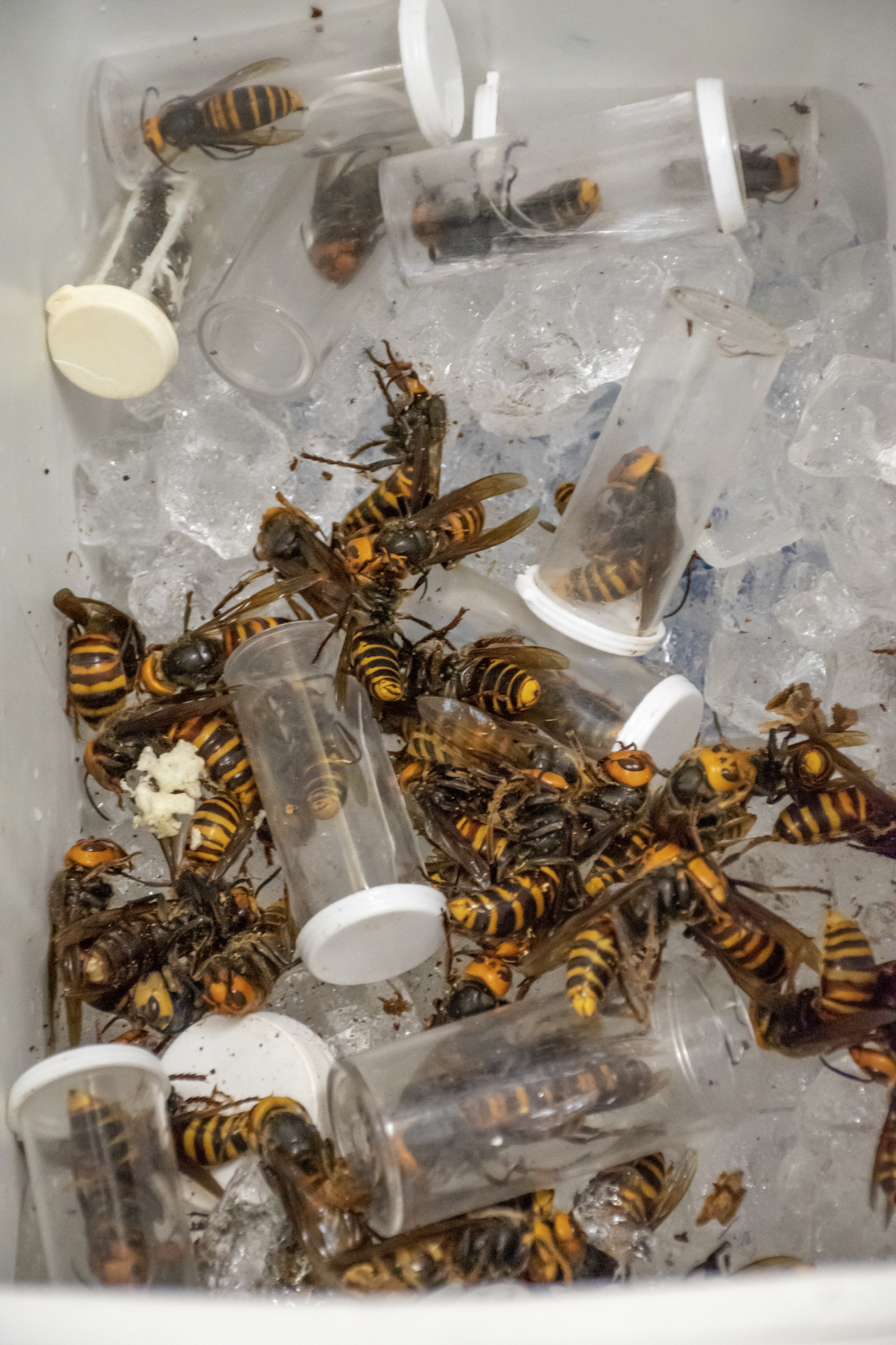British Columbia and Washington State are continuing to collaborate on an effort to track and destroy Asian giant hornets, starting with increased traps around the border.
The hornet, a large, invasive pest that targets pollinators and ignores international borders, will be tracked and trapped by the two jurisdictions.
While an insect ecologist at UNBC says the threat remains low in Northern BC, it doesn’t hurt to stay vigilant.
“They’ve evolved in a much warmer area than Prince George, and they aren’t used to the types of winters we get in these parts,” said Doctor Dezene Huber, who also works as a professor at the university.
“We’re seeing them down on the BC – Washington border and on Vancouver Island where it is much warmer, but so far they haven’t spread beyond that.”
In BC, the 2021 Asian giant hornet surveillance program will include traps in areas where there were previous findings like Nanaimo and the Fraser Valley, as well as continued outreach and networking with B.C. beekeepers.
Last year, six hornet specimens were collected in the Fraser Valley through public reporting, but no samples were captured.
No sightings or collection of Asian giant hornets were reported on Vancouver Island in 2020, which could be declared hornet-free if no specimens are reported this year.
Huber says despite their affinity for warmer temperatures, they aren’t sure exactly how far the pests can spread.
“They could spread further into B.C. with climate change, but it will be a good while before things get to that point where we are,” he explained.
In some parts of Japan, the hornets are considered a commodity, and nests sell for high prices.
The larvae when fried, are considered a delicacy, and the hornets themselves are often mixed with alcohol or roasted on skewers.
Colloquially referred to as ‘murder hornets,’ the insects can grow up to five centimeters long and are infamous for decapitating entire hives of honey bees.
They have a large orange head, mandibles, and a seven-centimeter wingspan.
One possible issue if the invasive species gains traction in the lower mainland, says Huber, is food supply.
“They’ll just decimate the beehives. They will kill the occupants and take them to feed their own young,” he said.
“So, if these hornets proliferate in the southwest portion of the province, where we get a lot of agriculture supply from because honey bees are relied on for pollinating those crops, we would see effects that way.”
Provincial officials are putting an emphasis on public outreach and reporting in addition to trapping.
Citizen scientists will have the option of using either orange juice or a brown sugar-based bait.
“Maybe we’ll have nothing to show for it at the end of the year, which would suggest that they don’t like BC and I think we are just very happy with that,” said Paul van Westendorp, from BC’s Ministry of Agriculture.
“Any kind of suspect character can be reported. It might turn out to be a yellow jacket, or lovely bumblebee, we don’t want to discourage the public from reporting these things.”
Reports from the public have been crucial for locating Asian giant hornets, says Westendorp.
Last year, half of the confirmed reports in Washington state and all of the confirmed reports in British Columbia were from members of the public.
“At this point in time we have no reason to believe we won’t be successful in our project,” added Westendorp.
Genome sequencing of the insects is underway by Washington and BC to confirm their origin, as it is still unclear exactly how they came to BC.
Something going on in the Prince George area you think people should know about?
Send us a news tip by emailing [email protected].






